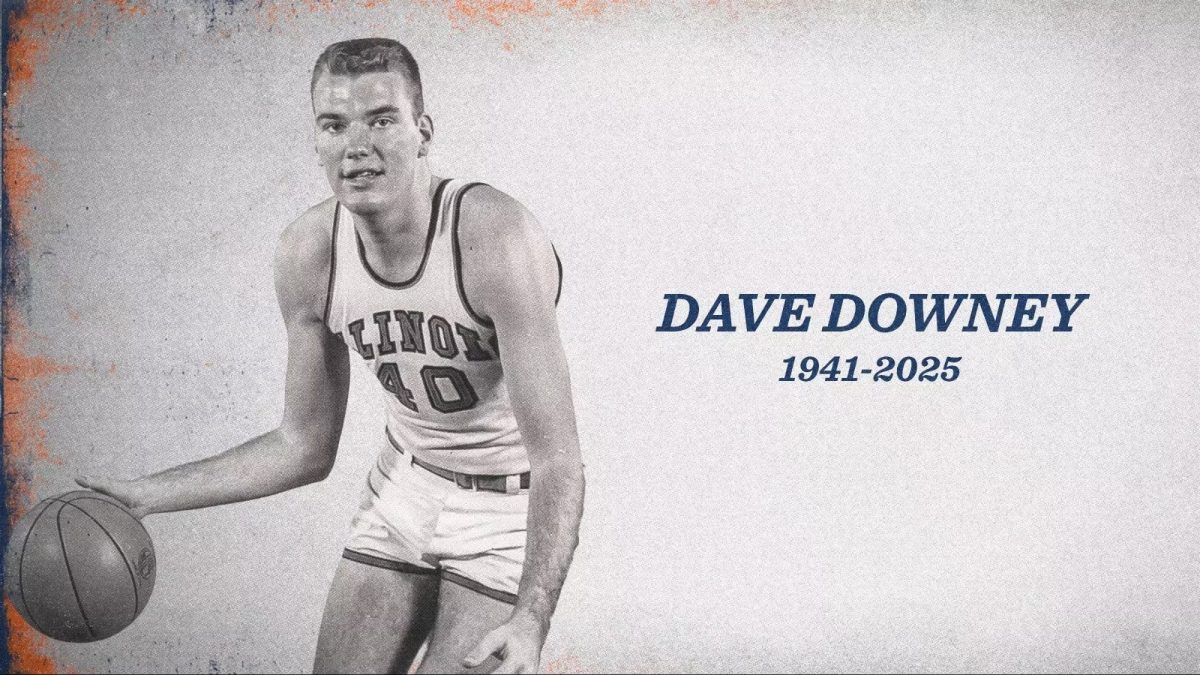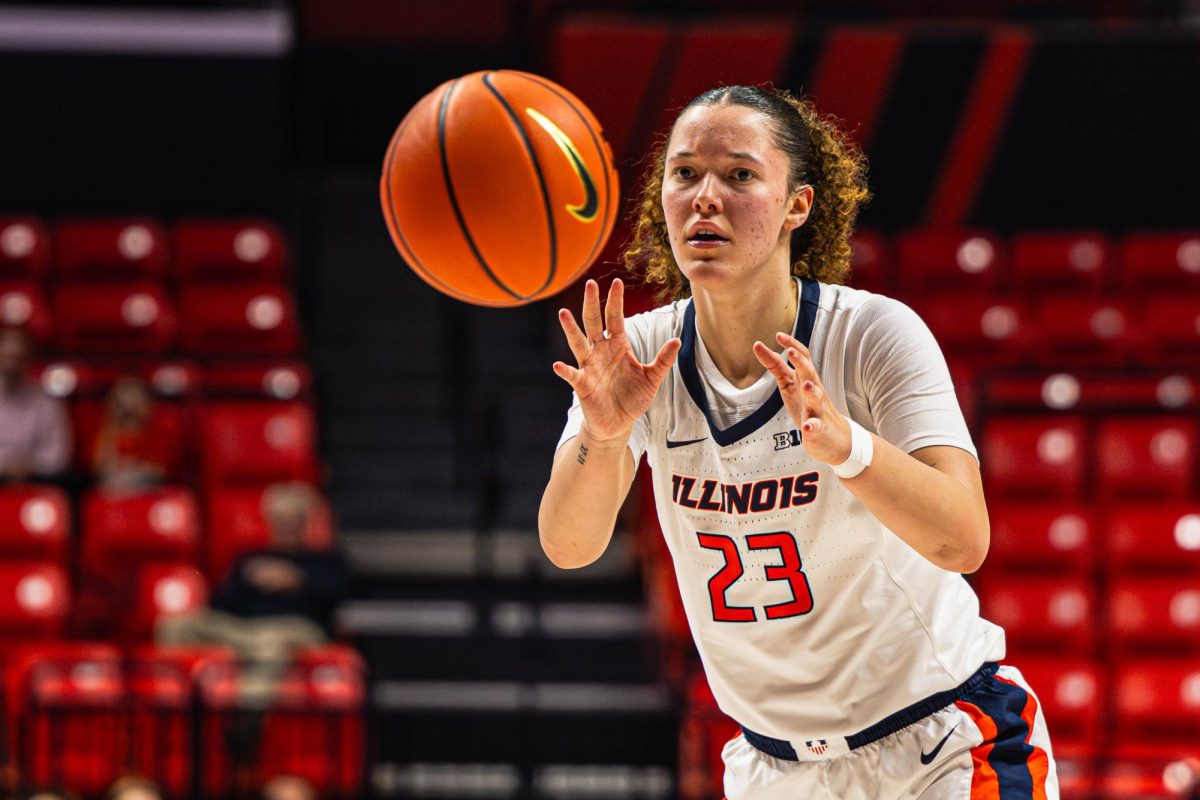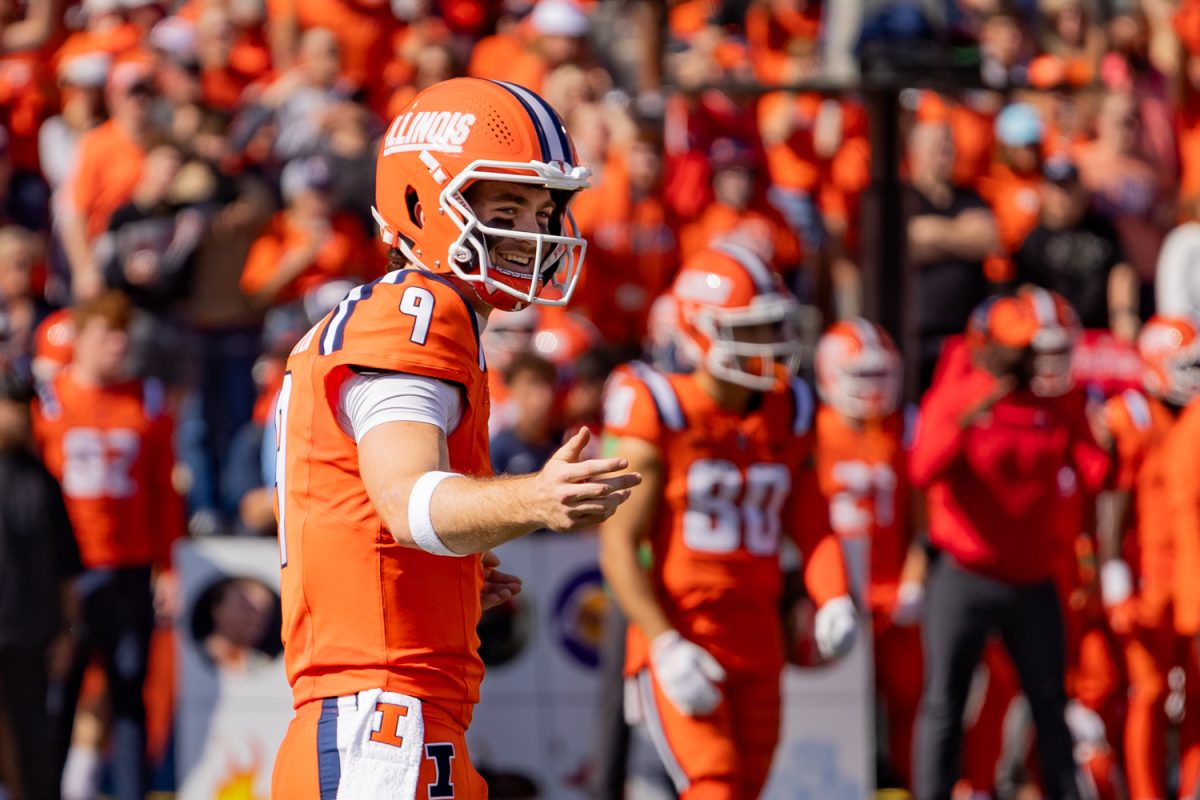Looking at the Homecoming football game this weekend, The Daily Illini interviewed former Chief Illiniwek Dan Maloney. He recounted his experiences in this phone interview with DI staff writer, Christine Herman.
Daily Illini: What was the process of becoming the Chief? What’s required to become the Chief?
Dan Maloney: You have to be a full-time University student and maintain a minimum 2.8 GPA as the base requirement. The tryout consists of about a nine to 10 week process, with about three workshops per week. You go through the physical aspects of dance, as well as learning all the dances. At the conclusion of the 10 weeks is the official tryout day. You perform the dance once in front of the tryout board. Those who made the first cut performed the dance a second time and went to an interview. The interview was many questions from the tryout board fired off in rapid succession in order to see how confidently and coherently you could answer.
DI: What about the dance — how was it made?
DM: It has evolved over many years. There are several different styles of dance with several different portrayers up until about 1970 with John Bitzer, and John kind of standardized the dance from there on out. The dance derived originally from Lester Leutwiler’s study out in Colorado, the camp reservation he would spend his summers at. Different Chiefs brought different “tweaks” to the dance — there were little subtle things. You could watch a dance and know who was dancing. On the whole, the dance itself pretty much remained the same since about the 1970s.
Get The Daily Illini in your inbox!
DI: What were the primary responsibilities of Chief Illiniwek?
DM: Your performances only accounted for maybe 20 percent of your responsibilities. You spoke at Alumni functions; Kyle Cline and I spoke to a few of the sports teams. There were a lot of public relations aspects to the traditions that a lot of people don’t realize and don’t even know about.
DI: What is your favorite memory from being the Chief?
DM: The last home game in the fall of 2004. The assistant Chief always performed at the last football game every year and the last home game was that day. I was fortunate enough to have both of my grandfathers in attendance, both of whom attended the University. My father and mother were both in attendance, as well as my aunts and uncles, all of whom are alums of the University. Knowing that was my first performance in Memorial Stadium, it’s probably one of my favorite memories.
DI: How does having been the Chief affect your life today?
DM: It has taught me a lot about dealing with changes, both positive and negative. Obviously, I feel the retirement of the Chief Illiniwek tradition was an extremely bad choice on the part of the University, but it helped me really understand there are going to be changes, there are going to be bumps, there are going to ups and downs in my life, and being a part of that tradition gave me a very good sense of how to deal with both positive and negative changes.
DI: What is your sentiment about the controversy surrounding Chief Illiniwek as the Illinois mascot?
DM: My big disappointment, for a lack of a better term, is there’s a lot of misinformation, there are people that still go around saying that we wear eagle feathers, that we’re all Eagle Scouts, and my favorite one is that we had to live out in a reservation up in Alaska for a summer. There are some other very negative (stereotypes) that I don’t feel need to be repeated. A lot of them have significant racial connotations. There was so much misinformation out there that decisions were basically made based off the misinformation.
DI: How does not having the Chief affect the Homecoming experience now?
DM: I already know of five or six people who I went to school with who are not coming back because they said the only reason they’d come back was to see the Chief performance. I’m sure everyone else knows five or six people; considering how many people have gone to this University and attended it and seen the Chief perform, that adds up to a lot of people.
DI: As the last of the Chiefs, how do you think the Chief will be remembered 100 years from now?
DM: As a physical example of the best of humanity. People who have seen (the Chief) know that they are seeing something that maybe their grandfathers and grandmothers had seen 50 years ago, it’s a connection that goes across time. That connection represents that world, that pride in something bigger than yourself, bigger than the individual. That’s what’s missing right now at the University.





